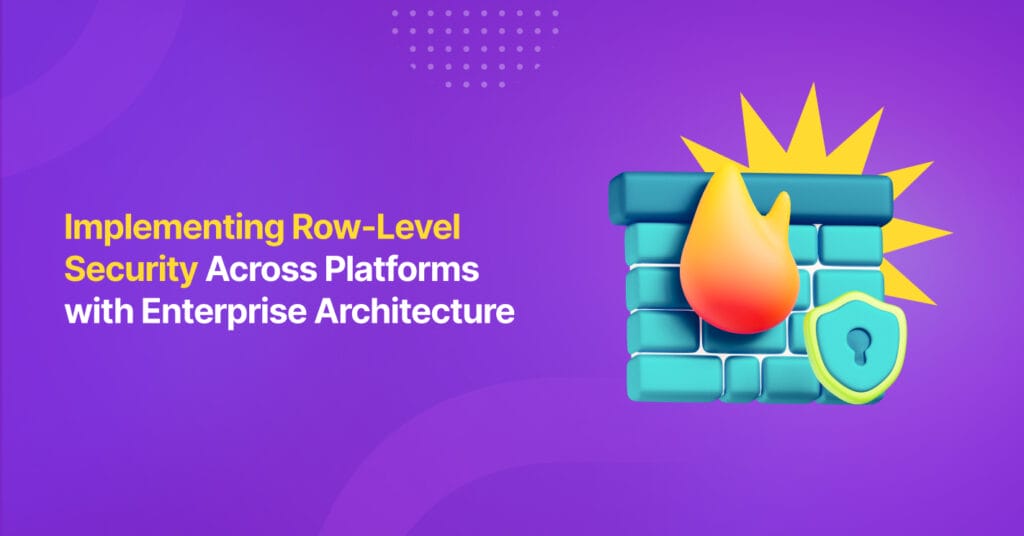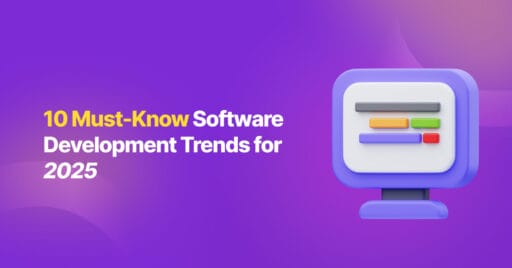Securing sensitive information while ensuring seamless access for authorised users is a critical challenge. Row-Level Security (RLS) has emerged as a fundamental solution for organisations that require granular data access control. It is especially crucial for enterprises that must comply with regulatory frameworks, strengthen cybersecurity defences, and optimise operational efficiency.
However, implementing RLS across diverse platforms requires a structured approach. Enterprise Architecture (EA) plays a pivotal role in designing scalable, maintainable, cross-platform RLS implementations. Tools like Sparx Systems Enterprise Architect provide a robust framework for developing secure access control models that align with business objectives and compliance requirements.
Understanding Row-Level Security (RLS)
Row-Level Security (RLS) is a data access control mechanism that restricts database row visibility based on user attributes or roles. By ensuring that users can only access data relevant to their permissions, RLS enhances data security while minimising the risk of unauthorised access.
RLS is widely used in industries such as multi-tenant SaaS, financial services, healthcare, and logistics, where data privacy, confidentiality, and role-based access control are critical. It is particularly beneficial when organisations enforce strict data segregation while maintaining centralised database management.
The Role of Enterprise Architecture in RLS Implementation
To achieve a well-integrated and efficient RLS implementation, organisations must align security controls with business workflows, compliance policies, and security frameworks. Enterprise Architecture ensures that RLS is designed as part of a comprehensive security strategy rather than an isolated solution.
Sparx Systems Enterprise Architect facilitates this process by providing tools to model, visualise, and document security policies, access control mechanisms, and governance structures. Whether organisations operate in cloud, hybrid, or on-premises environments, EA helps design scalable and maintainable RLS strategies that align with long-term business goals.
Cross-Platform RLS Implementation Strategies
Implementing RLS requires a tailored approach based on the organisation’s technology stack. Key strategies include:
- Database-Level RLS: Supported by major database systems such as SQL Server, PostgreSQL, MySQL, and Oracle.
- Cloud-Based RLS: Implementing RLS within cloud platforms like AWS, Azure, and Google Cloud ensures secure data access at scale.
- Business Intelligence (BI) Tools: Platforms such as Power BI, Tableau, and Looker incorporate RLS to manage report-level access based on user roles.
- Microservices & API Security: Ensuring secure and controlled access in distributed systems using API gateways and microservices-based architecture.
- Enterprise Architect Modeling: Using Sparx Systems Enterprise Architect to design and document security models that integrate with cross-platform RLS strategies.
Steps to Implement RLS Using EA & Sparx Enterprise Architect
A structured approach to implementing RLS involves the following steps:
- Define a Unified Security Model: Use Sparx EA diagrams to create a comprehensive security framework.
- Implement Role-Based Access Control (RBAC) or Attribute-Based Access Control (ABAC): Define access policies based on user roles, attributes, and business rules.
- Document Security Policies: Leverage Sparx EA to create clear documentation for security teams and stakeholders.
- Leverage Cloud-Native Security Tools: Integrate with solutions such as Azure SQL RLS, AWS IAM, and Google Cloud IAM.
- Ensure Auditability & Compliance: Implement logging, monitoring, and automated reporting to maintain compliance with standards such as ISO 27001, GDPR, and the Australian Privacy Act.
- Continuous Optimisation: Regularly review and refine security policies to adapt to evolving business and regulatory needs.
Business Benefits of RLS for Enterprises
Organisations that effectively implement RLS can realise significant benefits, including:
- Regulatory Compliance: Ensuring adherence to global and industry-specific data protection regulations.
- Data Protection & Insider Threat Mitigation: Preventing unauthorised access and mitigating risks associated with internal threats.
- Operational Efficiency: Automating access control mechanisms to simplify data security management.
Challenges & Best Practices for RLS Implementation
While RLS offers substantial security benefits, organisations may encounter challenges such as:
- Performance Optimisation: Ensuring that RLS policies do not create query bottlenecks.
- Complex Role-Based Access Management: Managing dynamic and hierarchical access structures in large enterprises.
- Balancing Security & Usability: Preventing excessive restrictions that may hinder productivity.
Best practices include defining clear access policies, monitoring system performance regularly, and refining security models continuously to align with business growth.
Conclusion & Next Steps
Row-Level Security is a vital component of enterprise data security, ensuring that users access only the data they are authorised to view. By integrating RLS within a structured Enterprise Architecture framework, organisations can achieve scalable, maintainable, and cross-platform security solutions.
Our expertise in enterprise security and tools like Sparx Systems Enterprise Architect helps businesses design and implement robust RLS strategies tailored to their needs.
Contact Mitrais today to explore how your organisation can enhance data security, ensure compliance, and optimise operational efficiency with effective RLS implementation.






